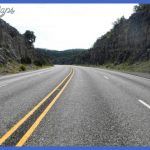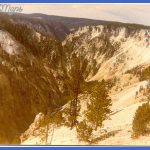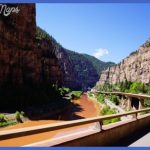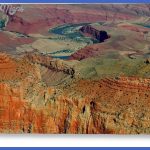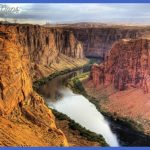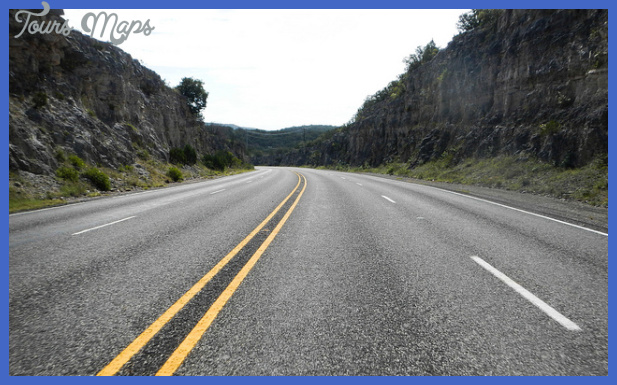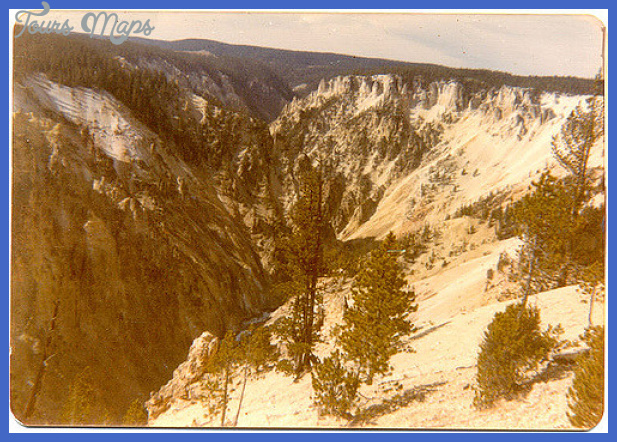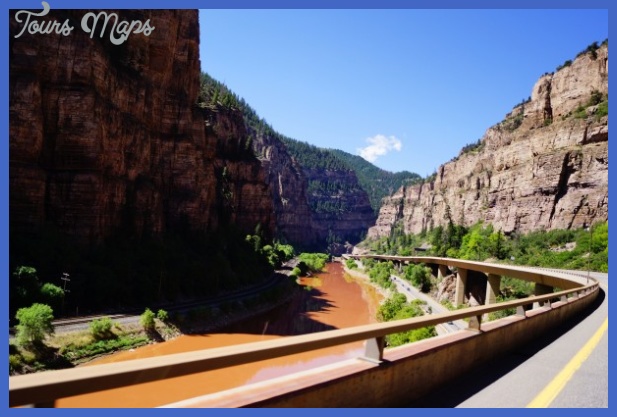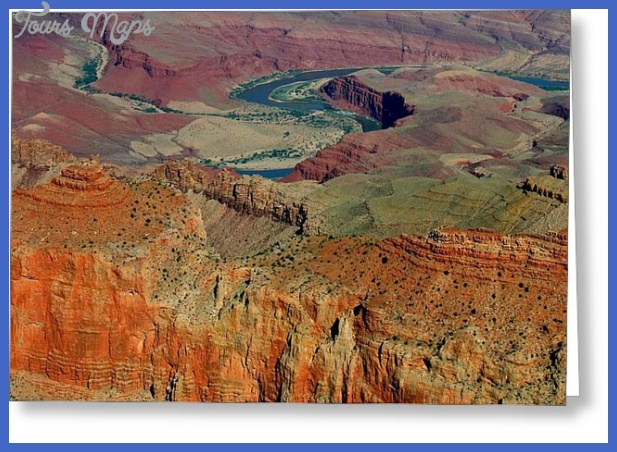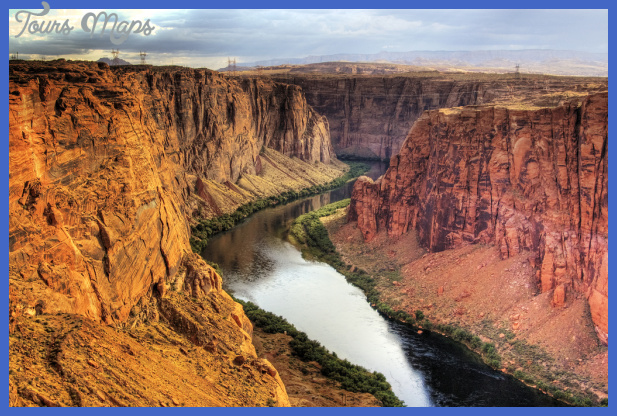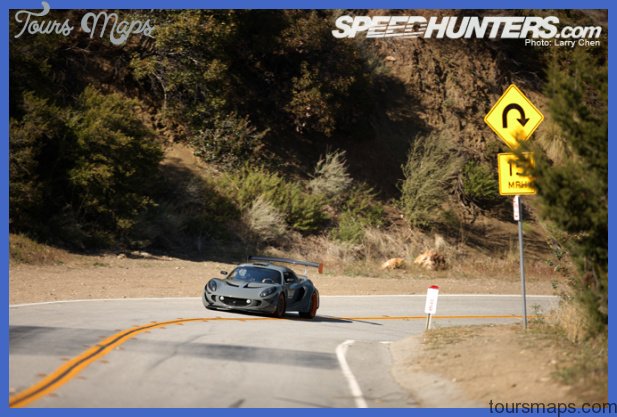This kettle pond was formed when a glacier covering this area gouged a hole in the ground. When the glacier melted, it left sand, gravel, and boulders on the ice in the hole. At a later, warmer, time the ice also melted, leaving the hole that is now filled with water. boils at a higher temperature when under pressure. Under the increased pressure from the lake, the hot rocks heated the groundwater until it was superheated. When the glaciers melted, the ice dam sometimes suddenly collapsed, letting the lake drain rapidly. The hot water at depth, suddenly relieved of the high pressure, boiled in a flash and created a steam explosion that blew out much of the rock around it. Examples of this type of explosion crater, now filled with water, are Duck Lake near West Thumb Junction [GEO.16] and Indian Pond near Fishing Bridge Junction [GEO.17]. Carving the Canyon The magnificent Grand Canyon of the Yellowstone, with its steeply sloping sides, colorful rocks, and spectacular waterfalls, was carved after the latest caldera-forming explosion 640,000 years ago. Before the caldera existed, the Yellowstone River had been eroding the Absa-roka volcanic rocks north of the present canyon area. Then came the Yellowstone caldera eruption, which dumped a lot of tuff; the river redug its channel through the debris.
The rhyolites flowed out, nearly filling the caldera with lava, and the Yellowstone started to carve its valley into those. Meanwhile, early glaciations must have occurred, though we can’t distinguish their effects from the later ones. We do know that during the last two glaciations, the whole area was buried in ice, except for the tops of some of the highest peaks. Because the glaciers were mostly moving across rather than along the Yellowstone River valley, they were not responsible for cutting the canyon. A glacier flowing from the Lamar River valley did block the Yellowstone valley, creating a dam and a lake that filled part of the Yellowstone Canyon. The canyon was then partly filled by lake sediments until the glacier retreated. The ice dam failed suddenly at one point during the retreat, causing a wall of water about 150 to 200 feet high (45 to 60 m) to flow north and west, rolling and carrying boulders along until they were dropped northwest of Gardiner, about 20 miles (32 km) downstream. There is evidence that this type of catastrophic flood occurred more than once. The Yellowstone River then redug its channel in the canyon and continued eroding to its present depth. Consequently, the Grand Canyon of the Yellowstone was cut mainly by the river, and all in about 150,000 years, a very short time geologically speaking. A number of local deep fractures permitted rainwater to seep into the earth and be warmed by the still-hot rocks.
The hot water rose toward the surface, reacting with the upper rocks and breaking down their minerals, weakening the rocks. This happened near the present Upper and Lower falls of the Yellowstone and resulted in zones of weaker and stronger rocks. The river exploited this and cut down through the softer rocks very rapidly. The result is two splendid waterfalls [GEO.18]. There are two falls because a layer of more resistant rhyolite separates the easily eroded rocks into upper and lower blocks of rock. This harder rock protected the lower soft block from erosion. It forms the lip of the Lower Falls. The upper soft block was eroded further upstream and gives us the Upper Falls. Geysers, fumaroles, mud pots, and hot springs Most visitors come to Yellowstone to see geysers. There are, indeed, more geysers in Yellowstone than anywhere else in the world. What visitors also find, however, is a vast collection of places that spurt, hiss, boil, and bubble, often displaying a rainbow of colors, sometimes with a nasty smell, but always interesting. What makes the different hydrothermal features do what they do? Basically, rain and snowmelt seep down to an area of very hot rocks. With all its young volcanics, Yellowstone has plenty of very hot rocks quite near the surface, so that water doesn’t have far to go to be warmed to its boiling point, boil into steam, expand greatly, and find a way to escape upward.
Geysers such as Old Faithful [GEO.19] are one special kind of steam and hot water emitter. They need a very steady supply of hot groundwater and special plumbing that includes a narrow fissure that goes deep into the ground and that has even narrower parts along the way. (For a more specific explanation of geysers, see How Does a Geyser Work? on 88.) Changes in the shape of a geyser’s plumbing, its water supply, or water temperature can change the timing, height of eruption, or volume of water. The changes are normally due to blockage of fissures by precipitation of solids onto their walls, to minor earthquakes, or to eruptions that are especially violent. Most geysers in Yellowstone erupt repetitively, but the intervals are not necessarily regular. Old Faithful Geyser is faithful in its timing, because the flow rate and temperature of the very hot water have been very constant. The 1959 Hebgen Lake earthquake just outside the northwest corner of the park considerably altered conditions in Yellowstone. Some geysers changed their cycles, some stopped erupting, and dormant ones resumed eruptions. Smaller earthquakes affect Yellowstone’s hydrothermal features every year.
Carving the Canyon Photo Gallery
Maybe You Like Them Too
- The Best Cities To Visit in The World
- World’s 10 Best Places To Visit
- Coolest Countries in the World to Visit
- Travel to Santorini, Greece
- Map of Barbados – Holiday in Barbados

